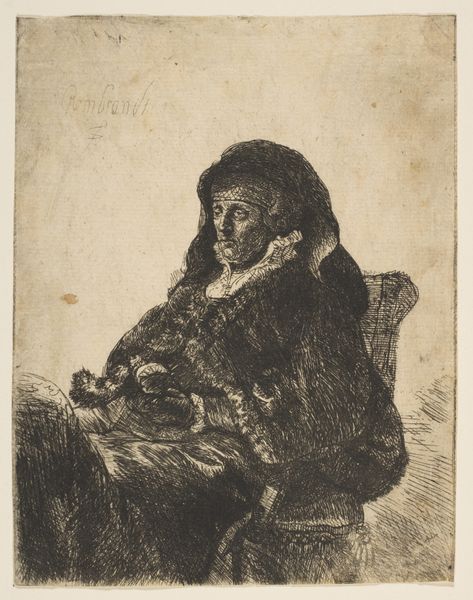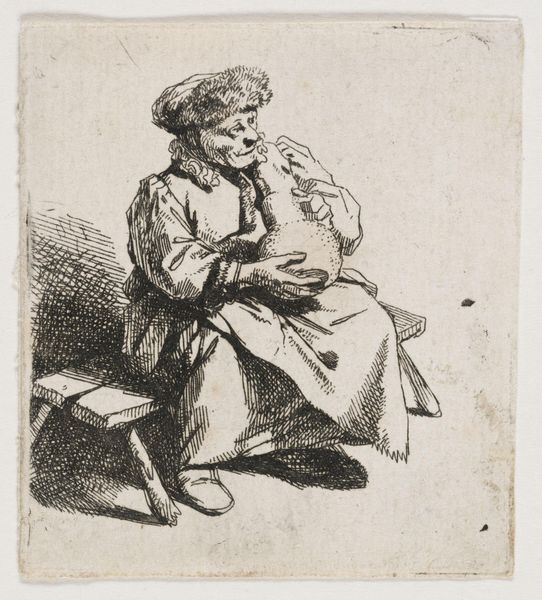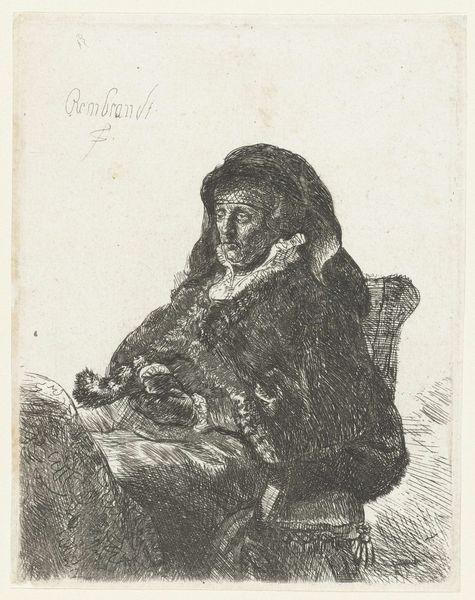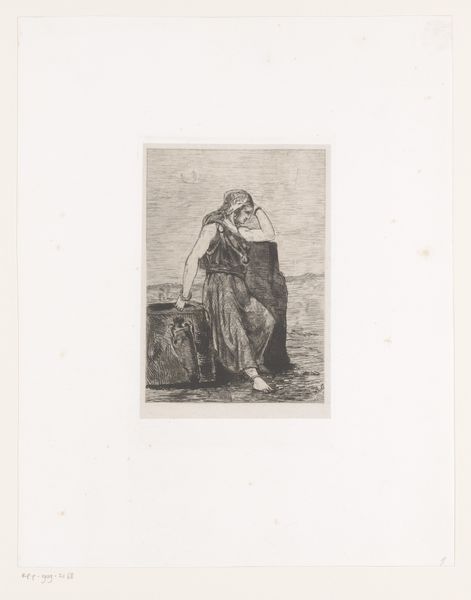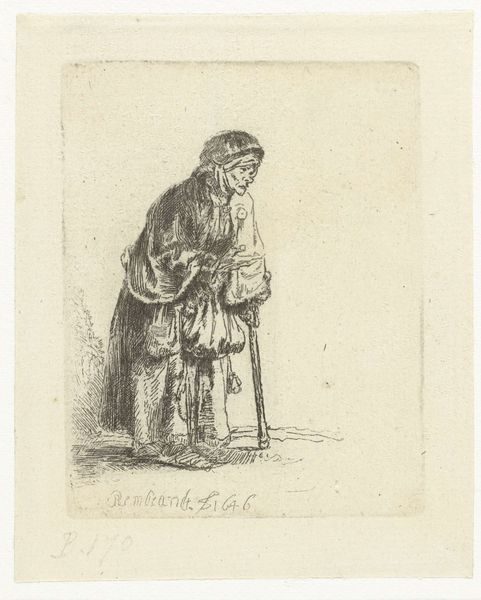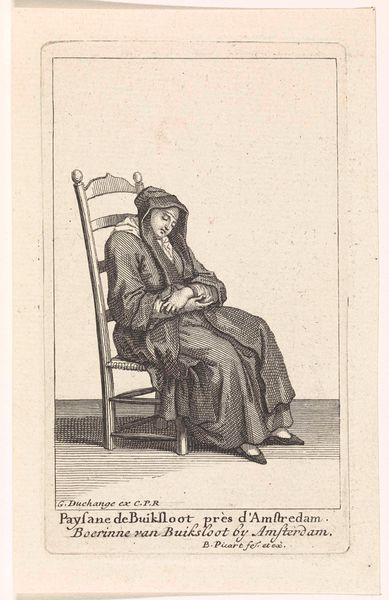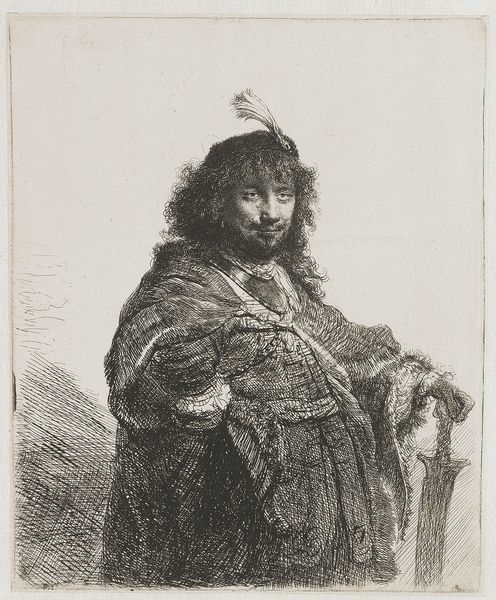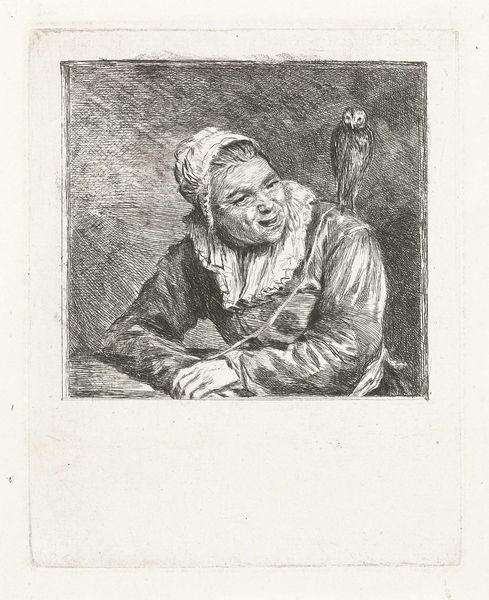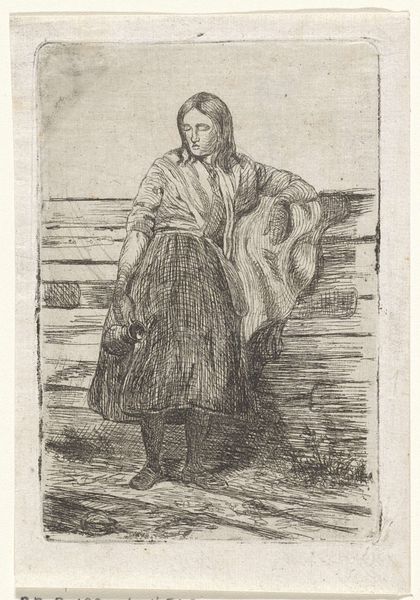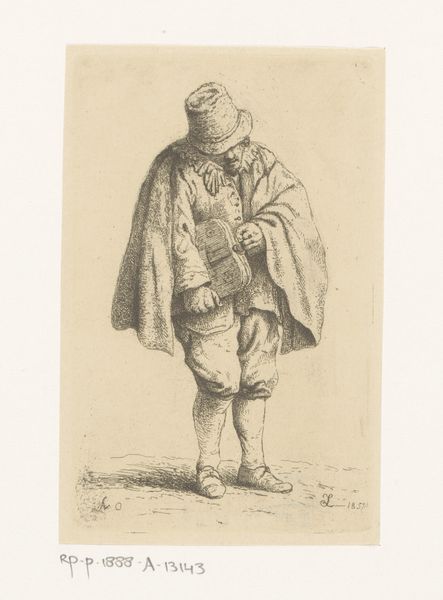
Rembrandt's Mother in Widow's Dress and Black Gloves c. 1632 - 1635
0:00
0:00
print, etching, intaglio
#
portrait
#
baroque
#
dutch-golden-age
# print
#
etching
#
intaglio
#
figuration
#
group-portraits
#
history-painting
#
realism
Dimensions: 5 7/8 x 4 9/16 in. (15 x 11.6 cm) (plate)
Copyright: Public Domain
Curator: Here we have Rembrandt van Rijn's etching, "Rembrandt's Mother in Widow's Dress and Black Gloves," dating from about 1632 to 1635. It's a small but impactful portrait. Editor: My first thought? Quiet sorrow. There's something so intensely private in her gaze, like we've stumbled upon a very personal moment. All that black ink… it’s heavy with grief. Curator: Indeed. The work relies heavily on the intaglio technique. Observe the density and directionality of the etched lines. See how Rembrandt uses the fineness of the lines to delineate the textures of her garments, specifically the intricate lace and fur. Note also, how the composition is designed to move our attention towards her face, even though we can notice how much darker are her cloths. Editor: It's almost like he’s built her out of shadows. Each stroke tells a story, and combined, they make a world around her. What's amazing, if you look at the gloves, there’s a vulnerability that you do not find easily anywhere else. Do you know what I mean? And that expression, it captures a universal feeling, that loss of light in a human being, so close. Curator: It's the light that creates form. The play of light and shadow, which we, of course, know Rembrandt to be so adept with. That interplay really allows the etching to define the planes of the figure. Notice how this technique helps in expressing volume. It truly is amazing. The stark contrast between the lightness of the paper and the black of the ink makes it dramatic. It does create, however, some optical illusions due to the many lines used. Editor: It is, in some ways, an illusion. That's the beauty of art, isn't it? Taking something fleeting and trying to capture it. And to think this etching is what, almost 400 years old? It feels like it was pulled from my own memories. My great-grandmother, when I think of this image, it reminds me exactly of that feeling. And I can not feel otherwise! Curator: Time collapses when art allows such profound connection. Her face and garb exemplify, of course, some aspects of Baroque art. It allows you to connect your emotional responses, personal context and also this sense of timelessness. Editor: It does invite all that. Thank you! I can’t believe how those lines make her pop into a soul, almost touchable. Really makes me think differently about how an artist tells a story only with shapes, shade, and light!
Comments
No comments
Be the first to comment and join the conversation on the ultimate creative platform.
